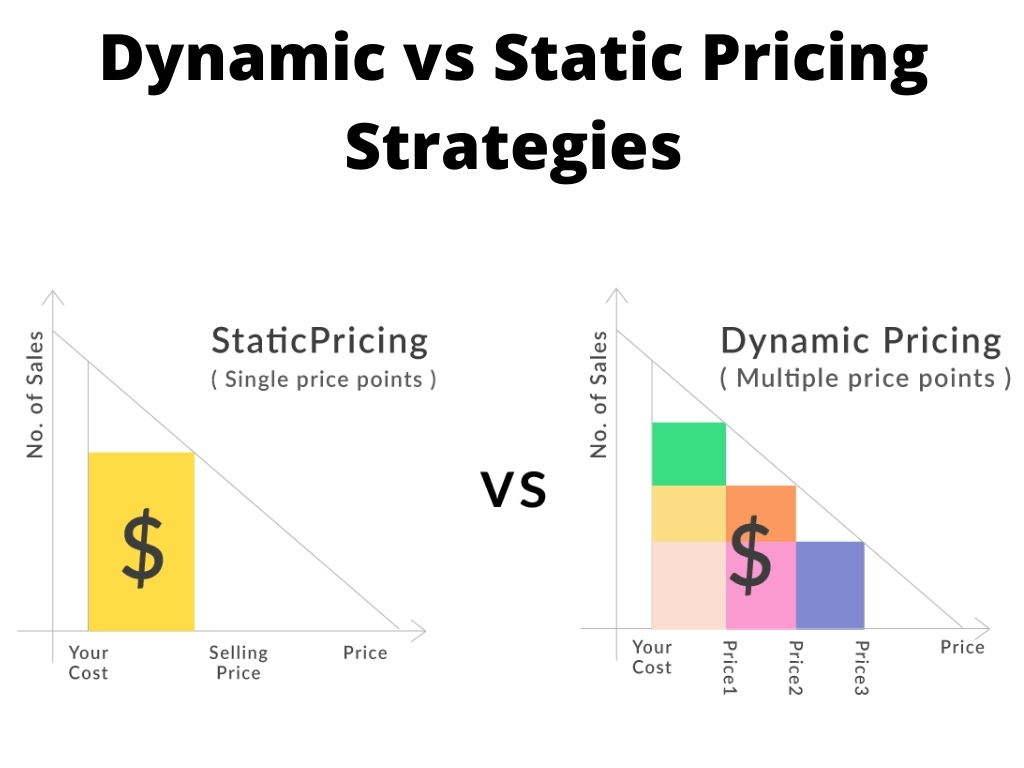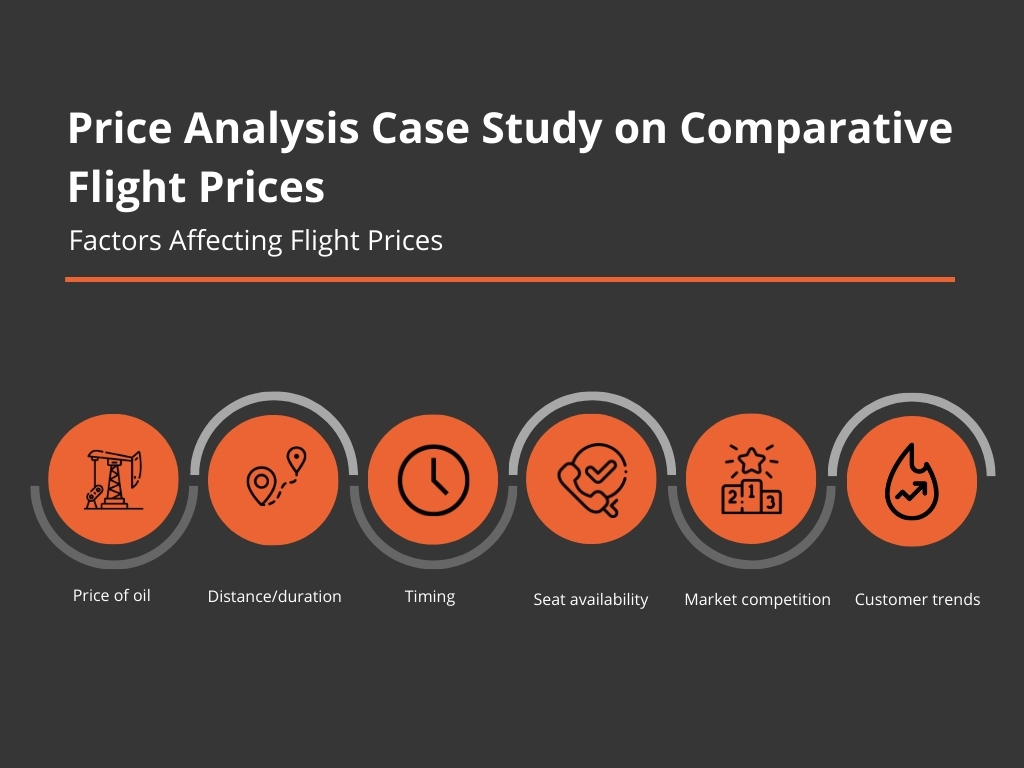Price Analysis Case Study on Comparative Flight Prices

Ever wondered why do flight prices fluctuate so much? The rates change almost every day, and it is often difficult to bag the best deals out there. This is where price comparison websites come into play.
These platforms collect information and then offer a detailed comparative analysis for users. You can now figure out all the possible airlines and routes from point A to point B in a few seconds. Most B-schools and finance courses include a case study on the flexible pricing policies of airlines.
The aviation sector is an ever evolving and competitive space. And as marketing students, you already know how and why prices fluctuate in a dynamic industry. Here I tell you all about how to approach a price analysis case study on comparative flight prices. Read on:
Most airline companies raise their capital via public shares.
Dynamic vs static pricing strategies
There are two main types of pricing models that airlines resort to. The static or fixed pricing model is when the flight fare doesn’t change because of the market trends. This is not a popular model for the aviation sector as it can lead to huge losses.
The dynamic pricing model is when the pricing changes in real-time as per the demand/trends of the market. Here, the flight fare fluctuates as per the behaviour of the competition. Most airlines don’t opt for pure dynamic pricing as well.
Instead, most airlines operate on a hybrid system of fixed and flexible pricing policies. The base fare of the flight remains static. The additional charges vary as per the traveller’s seat selection and extra customization options.
In most cases, the airlines keep the fare price points fixed for weeks on end. The airline alters the fare classes that comparison websites update regularly. Although some companies generate the fare from scratch depending on the user’s requirement.
Do airlines opt for dynamic pricing models?
Most airlines follow a mixed system of static and dynamic pricing strategies. However, as per recent reports by ATPCO, the aviation sector might soon move towards pure progressive rates. This means that the prices for the flight ticket would vary from person to person.
At present, the airline revenue management allows companies to align their standard fares to a more dynamic model. About 80 high-end airlines, including Emirates, Lufthansa, Southwest, and Aero Mexico, work on this model.
How are flight prices compared?
ATPCO or Airlines Tariff Publishing Company is a private corporation that collects and distributes airfare related information. ATPCO currently collaborates with 427 airlines worldwide, supplying over 99% of the price changes to the significant airfare engines.
Some of the top clients of ATPCO’s data include the following platforms.
- Global Distribution Systems or GDS like Sabre, Amadeus and Travelport
- Central Reservation System or CRS of airlines
- Online Travel Agencies or OTA like Expedia, Travelocity and Trivago.
The ATPCO also maintains an extensive digital database of all the airfares and trends of the aviation sector. The corporation is jointly owned by some of the top airline companies around the world. Some of these names include Air France, Air Canada, American Airlines, British Airways, etc., to name a few.

Factors affecting flight prices
As marketing students, you must be aware of the different pricing models that exist in the aviation industry. Note that when I mention comparative flight prices, I refer to commercial airlines open for public usage only.
The price of airline tickets depends on a lot of factors. And while each airline company has some internal policies and regulation, these are the common determinants that everyone follows.
Price of oil
This is the first prominent factor that affects flight fares. In 2011, for instance, jet fuel became the topmost priority for calculating the operating expenses. The more accessible and cheaper the fuel sources are, the less it costs the company.
The airline can then afford to cut down the flight prices and still keep their profit margin intact. However, because the prices fluctuate, most airlines indulge in a process called hedging fuel prices. Here, the company agrees to buy large quantities of oil at a predetermined fixed price.
Distance/duration
The distance and duration of air travel also impact the airfare. However, note that other factors come into play as well. For instance, the popularity of the destination affects its fares. The more crowded/tourist-friendly the place is, the higher the rates shoot up during holiday season.
The rates don’t double up just because you travel double the distance. Often, the difference in the airfare is minimal for longer distances. Duration refers to the hours/days of air travel.
Some companies generate the fare from scratch depending on the user’s requirement.
Timing
The timing of the flight, i.e. when you book the tickets are also crucial to the airfare. Usually, booking tickets off-season is a lot cheaper as the fares drop drastically. If you look at the fare comparison websites, then the prices change almost every day.
The ticket prices are highest about 7-days from departure as the demand is usually skyrocketing. The best time to buy air tickets is between a 2months-3weeks before the departure date. Tuesdays are often the cheapest, and you can opt for early morning or afternoon flights as they’re more accessible.
Seat availability
Seat availability and customer choices also affect the final air ticket pricing. Travellers can now choose to fly economy, business, or premium classes. Each of these sections comes with unique features and amenities. For instance, the business class offers more leg space and luxury to passengers.
Most solo passengers opt for either the window seats or the aisles. And the middle seats usually end up empty as they’re the least comfortable/preferred. Over the years, many airlines have introduced new policies, trying to fill up every seat on the aircraft.
Market competition
There was a time when the aviation sector had a few airline companies ruling the market. In most countries, an aeroplane is privatized, opening new opportunities for entrepreneurs to enter the competition. The more airline companies cover the same route, the more flight prices fall.
Most airlines also have significant public investment and shares in the market. So, any change in the business environment or the micro/macro trends directly impacts the flight prices. Students can include a short PESTLE analysis in their case study analysis as well to further highlight this point.
Customer trends
The purchasing power and the overall economy also impacts the airline prices. Passengers could also add new facilities, meal packages and other features to make their journey more comfortable. Plus, insurance charges, the taxes are some additional charges that add on to the final price fare.
Other than that, government interference and regulation are essential determinants as well. For instance, the recent COVID-19 pandemic halts all the international/domestic flights. The travel and tourism sector takes a big hit as well, leading to hotels and airlines getting shut down everywhere.

Cracking a price analysis case study
A price analysis case study takes two airlines and tries to compare their fare strategies. As marketing students, you might already be aware of these case studies as part of your curriculum. As an economics assignment expert, I have a few suggestions on how to approach and crack a price analysis case study
- Follow a set structure of an introduction, middle body, and a definitive conclusion
- Always mention the core hypothesis and research statements before you begin your paper
- The case study analysis then attempts to prove or disprove the hypothesis with concrete evidence
- Set the context of the case study in the intro paragraph
- Include infographics, charts, tables, and graphs wherever necessary
- Refer to relevant studies and surveys to further build upon your arguments
- Discuss the future prospects and potential of the aviation sector towards the end of your paper
- Always cite your sources- you can opt for APA in-text referencing or MLA styles.
- Add an annotated bibliography towards the end of your analysis.
Structuring a case study analysis is quite simple, provided you have a structure in place. Consult your peers and professors about the ways to approach a flight fare comparison case study.
Quick Links And References
Here are a few sources and papers on airfares and travel that you can refer to and read up for more information. Note that these sources are taken from university websites and government portals. Feel free to cite them in your next paper as well. Check it out!
Airline Dynamic Pricing- ATPCO
Price Elasticities of Demand for Passenger Air Travel- A Meta-Analysis
Price Rivalry in Airline Markets
Emerging Pricing Strategies on the web- Lessons from the Airline Industry
The Bottom Line
There was a time when air travel was considered a luxury. Booking a flight was affordable only for the elite. However, over the years, airlines have become more accessible to the common public. There are different classes, seats, and amenities that travellers can pick from.
Also, most airline companies raise their capital via public shares. So, any changes in the share market have a direct impact on flight prices. I hope that this blog offered some insight into airfares and its calculation.


